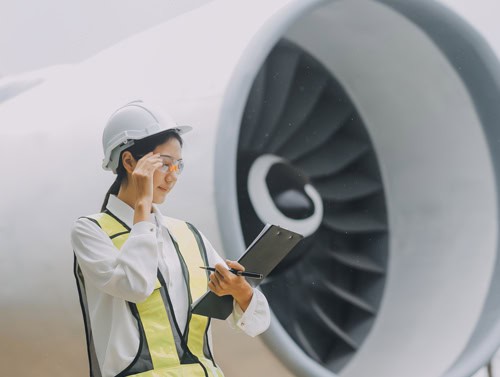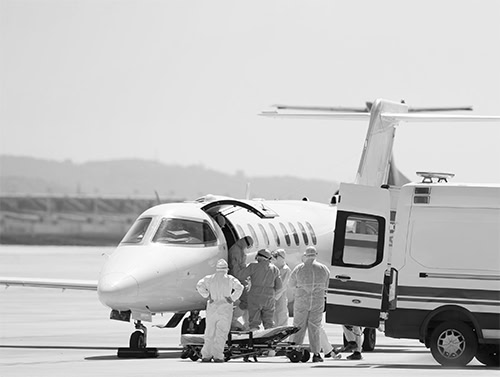Air Ambulance Safety Measures: Bluedot Keeps the Standards Flying High
Recent events have raised questions of what safety measures Air Ambulance operators take to ensure the, safety of their medical flights. Bluedot is proud to say that we are one of the few licensed global operators based in the Asia and Africa region to be accredited by the world leading standards body, the European Aeromedical Institute, EURAMI, who promotes the three core principles of Excellence, Quality and Safety.
Air ambulances play a crucial role in providing rapid medical care to patients in emergency situations. Given the high-stakes nature of these missions, air ambulance jets are equipped with a range of safety measures to ensure the well-being of both the patients and the medical staff onboard. These safety protocols include specialized aircraft features, crew training, and operational procedures, all designed to meet stringent aviation and medical standards.
Selection of Aircraft & Equipment
One of the primary safety measures taken by air ambulance jets is the selection of aircraft specifically designed for medical emergencies. These aircraft are typically helicopters or fixed-wing jets, modified with medical equipment and features. The cabins of air ambulances are equipped with advanced life support systems, including ventilators, defibrillators, and infusion pumps, which are critical for stabilizing patients during transport. These systems are securely anchored to prevent movement during flight, reducing the risk of injury to patients and medical staff.
Our Bombardier Challenger 604 aircraft is a configured Air Ambulance jet that is fully equipped with Federal Aviation Administration (FAA) approved and other advanced medical equipment, and a dedicated and experienced aeromedical crew. This presents a clear safety advantage over services that use chartered aircraft that are adapted for ad-hoc use with medical teams that may or may not have reliable credentials. This is a crucial differentiating factor in the selection of air ambulance operators that every customer must be aware of.
Aviation Safety Features
In addition to medical equipment, air ambulances are fitted with multiple safety features tailored to aviation standards. These include collision avoidance systems, weather radar, and enhanced lighting systems that improve visibility for night flights. The aircraft are also equipped with emergency oxygen masks, fire extinguishers, and emergency exits, ensuring that both patients and crew can safely evacuate in the event of an emergency. The aircraft are regularly maintained to meet safety regulations set by aviation authorities like the Federal Aviation Administration (FAA) or the European Union Aviation Safety Agency (EASA).
Emergency & Safety Protocols
Equally important are the safety protocols followed by the medical crew and pilots. Pilots of air ambulances undergo rigorous training not only in aviation but also in managing high-pressure medical situations. They are trained to handle various emergency scenarios, including turbulence, bad weather, and rapid changes in altitude, which may affect the patient’s condition. The crew is also trained in patient care, with medical staff being skilled in performing emergency procedures while ensuring patient safety throughout the flight.
Communication Systems for Safety
Furthermore, communication is a critical safety measure in air ambulance operations. Air ambulance crews are in constant contact with ground-based medical teams, enabling seamless coordination of patient care. In addition to regular communication with air traffic control, pilots and medical teams rely on satellite communication systems to ensure they can report any changes in the patient’s condition or any unexpected flight obstacles.
Route Management for Safety
Operational safety is also enhanced through flight planning and route management. Air ambulance jets often have pre-designated flight paths that avoid high-traffic areas or regions with known hazards. Weather conditions are continuously monitored, and flights are rerouted if adverse conditions are anticipated. By carefully planning the flight route, air ambulances minimize risks and ensure the fastest possible transport to medical facilities.
Bluedot has experienced and adept planners for all our medical flights, with over 5000 worldwide assists and 100% successful transfers. To know more about how we can help you transport patients from country to country, with complete bed-to-bed planning, following international safety measures, get in touch with us 24 hours, 365 days a year, at +971 551 881 441 by call or WhatsApp, or at www.bluedotairambulance.com



